What It's Like To Film Anthony Bourdain's "Parts Unknown" In Madagascar
Jeff Allen has produced Anthony Bourdain's Parts Unknown for four seasons, including episodes filmed in Vietnam, Mexico and the Bronx. Jeff has worked for National Geographic, Discovery Channel and Travel Channel in the past, and vomited from eating twice in his life, once due to mistaking cat food for tuna fish when hiking Machu Picchu, and again from a three-day-old McGriddle on a dare.
Madagascar. I'll admit that I knew very little about this island nation off the coast of Africa before this trip in early December. There were of course the funky monkeys called lemurs and the packs of jungle creatures that rival those seen at Bronx Zoo. And there was the fact that nearly everyone I knew had never been there and knew nothing about the place, but they all loved those mischievous penguins from the animated film. So when our director, Tom Vitale, and I found out that we were headed there with Tony and film director Darren Aronofsky, my head exploded.
Then there was the Malarone. For those of you unfamiliar with the drug, it's a prophylactic taken in areas where there's a chance of being infected by malaria from mosquitos. It's an incredible lifesaving invention in the modern era. It's also a fantastic way to spend sleepless nights in a state of vivid awake-sleep. That is, when you're on the drug, it's hard to distinguish between being awake in real life and being awake in your dreams. But more on that later. Here's a behind-the-scenes look at what went down at the end of the world. (Click on the first image to view as slideshow.)
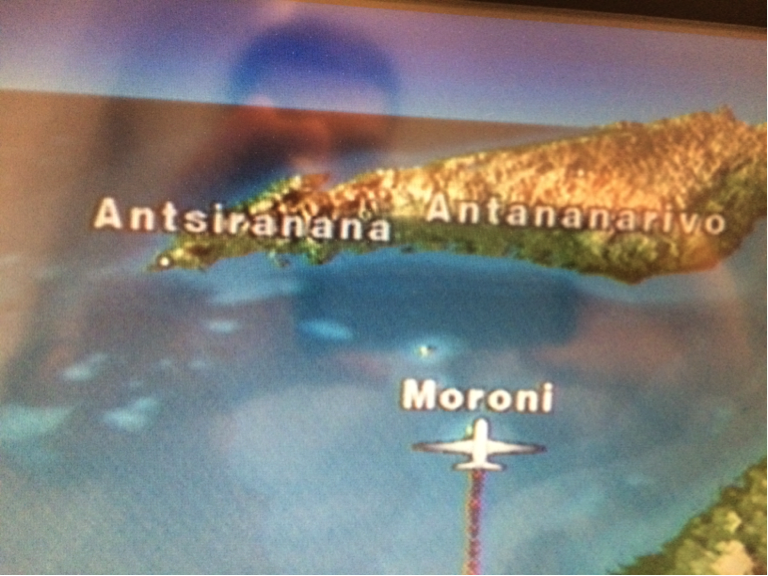 Traveling to Antananarivo, or Tana as it's commonly called, took us nearly 30 hours, connecting from New York City through Paris and hopping the 14-hour long-haul flight to the capital city. Our itinerary: Spend three days exploring Tana, then drive 12 hours south along the main highway through rice-paddy country to Ranomafana National Park. From there we'd hop the Fianarantsoa East Coast train headed to the coastal town of Manakara on the shores of the Indian Ocean.[/caption]
Traveling to Antananarivo, or Tana as it's commonly called, took us nearly 30 hours, connecting from New York City through Paris and hopping the 14-hour long-haul flight to the capital city. Our itinerary: Spend three days exploring Tana, then drive 12 hours south along the main highway through rice-paddy country to Ranomafana National Park. From there we'd hop the Fianarantsoa East Coast train headed to the coastal town of Manakara on the shores of the Indian Ocean.[/caption]
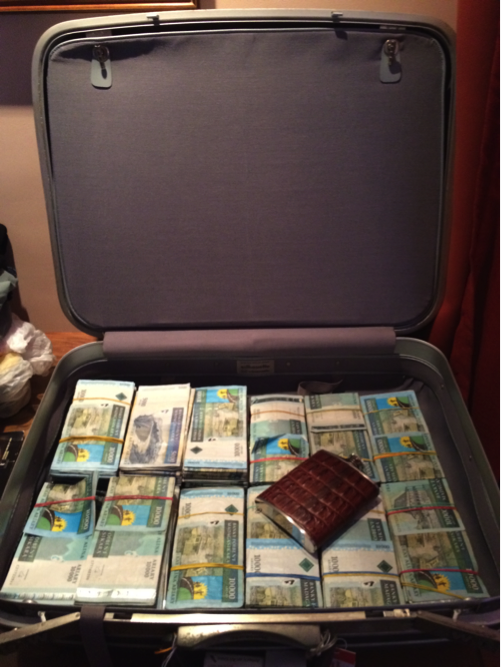 First things first: Exchange dollars for the local currency, ariary. In lieu of going to the bank, our local fixers Hary and Coen arranged for a local money exchanger to visit me at the hotel. He gave us better rates than the bank would, plus an opportunity to see the entire production budget jammed into one suitcase.[/caption]
First things first: Exchange dollars for the local currency, ariary. In lieu of going to the bank, our local fixers Hary and Coen arranged for a local money exchanger to visit me at the hotel. He gave us better rates than the bank would, plus an opportunity to see the entire production budget jammed into one suitcase.[/caption]
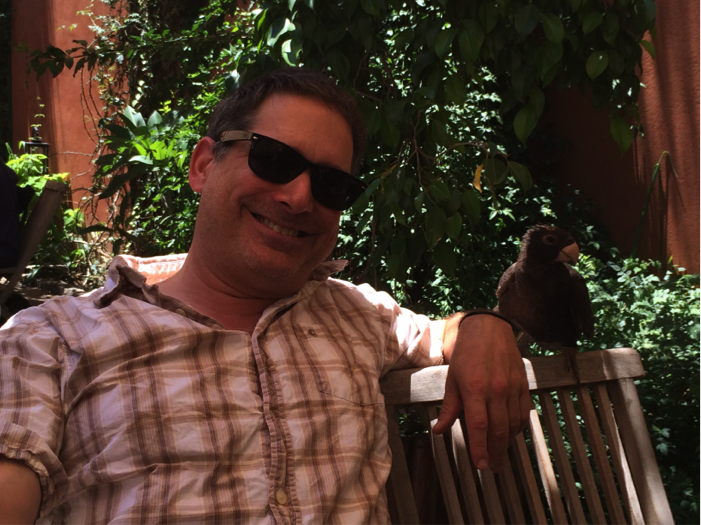 Along for the trip were DPs Zach Zamboni and Todd Liebler and camera assistant Alex Lewis. Here's one of our morning production meetings with the hotel parrot, a.k.a. Todd's BFF.[/caption]
Along for the trip were DPs Zach Zamboni and Todd Liebler and camera assistant Alex Lewis. Here's one of our morning production meetings with the hotel parrot, a.k.a. Todd's BFF.[/caption]
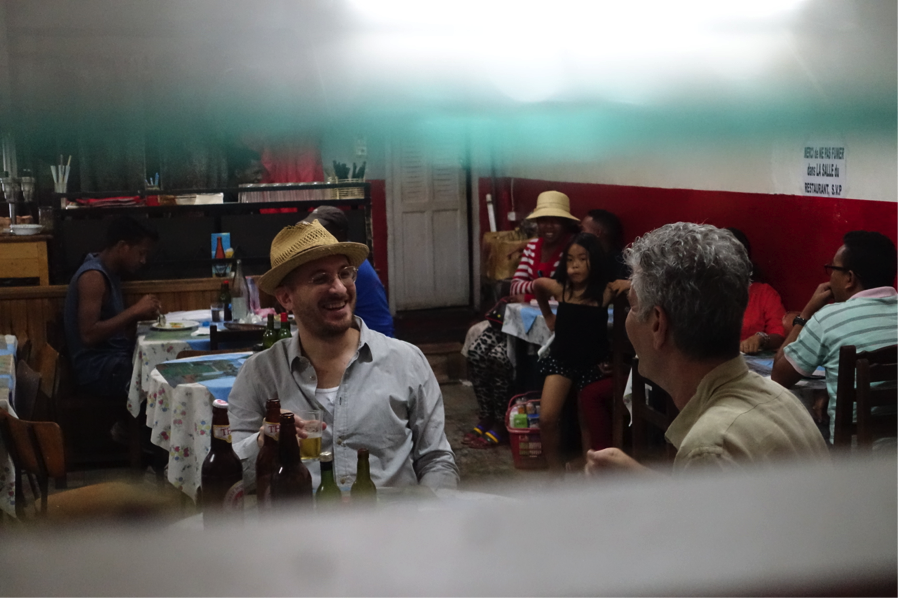 Our first scene with Darren and Tony was supposed to be outdoors, walking in the market downtown with a group of street musicians and Rossy, a local musician turned politician. Fifteen minutes before Tony and Darren were due to arrive, the weather completely flipped on us, the skies opened up, and we ran over to our backup indoor option at this restaurant bar down the street. Rossy's car got stuck in the flooded street en route, so we pushed his scene to a dinner later that night.[/caption]
Our first scene with Darren and Tony was supposed to be outdoors, walking in the market downtown with a group of street musicians and Rossy, a local musician turned politician. Fifteen minutes before Tony and Darren were due to arrive, the weather completely flipped on us, the skies opened up, and we ran over to our backup indoor option at this restaurant bar down the street. Rossy's car got stuck in the flooded street en route, so we pushed his scene to a dinner later that night.[/caption]
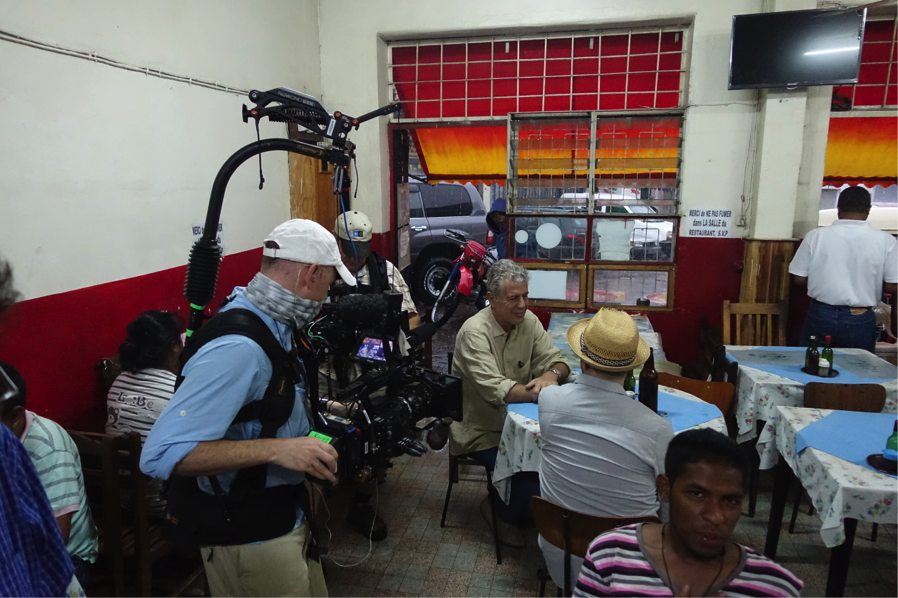 Most of the cinematography on the show is a combination of EZ rigs with prime lens work, giving a more cinematic look since we had Darren on board for the journey. Working with Darren, we weren't quite sure what to expect. We were immediately encouraged by how down-to-earth he is and by his curiosity about our process. The real question was where to film the food scenes, since Darren is a vegetarian.[/caption]
Most of the cinematography on the show is a combination of EZ rigs with prime lens work, giving a more cinematic look since we had Darren on board for the journey. Working with Darren, we weren't quite sure what to expect. We were immediately encouraged by how down-to-earth he is and by his curiosity about our process. The real question was where to film the food scenes, since Darren is a vegetarian.[/caption]
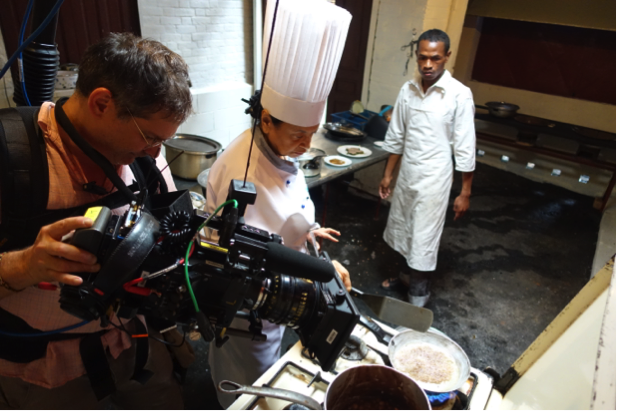 The second day of shooting: An hour before the meal scene and jazz performance at Chef Mariette's, the weather violently turned on us. We have a small, ambitious crew, and everyone wears multiple hats. Prepping for this scene, I hung a few lights in the dining room, gelled the back windows, set up microphones and checked levels for Chef Mariette and our jazz singer, Anna.[/caption]
The second day of shooting: An hour before the meal scene and jazz performance at Chef Mariette's, the weather violently turned on us. We have a small, ambitious crew, and everyone wears multiple hats. Prepping for this scene, I hung a few lights in the dining room, gelled the back windows, set up microphones and checked levels for Chef Mariette and our jazz singer, Anna.[/caption]
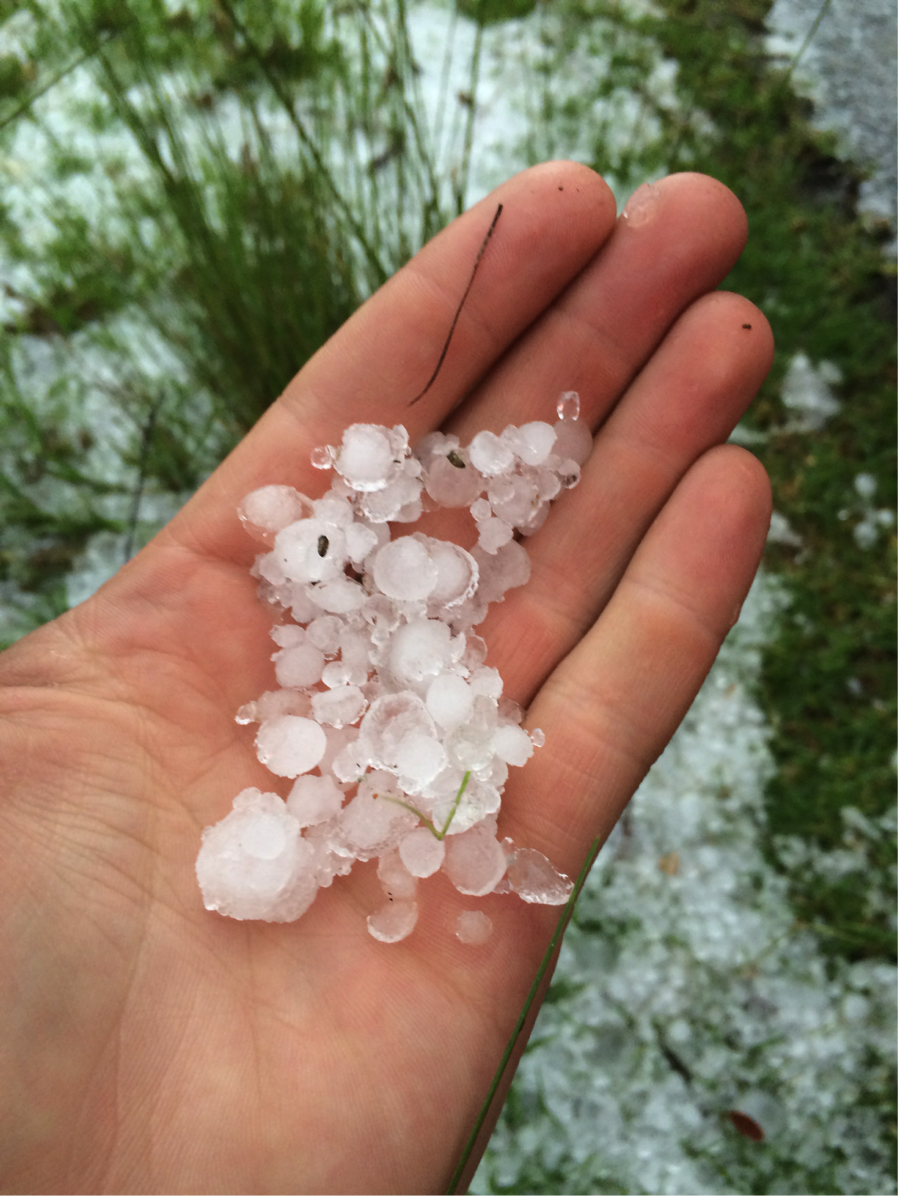 Third day of shooting: Crew was wheels up at 5 a.m. to hit the road south to Ranomafana National Park. We split into two teams to cover as much b-roll as possible on the 12-hour trip. Todd and I again lucked out with incredible weather as a freak hailstorm came out of nowhere. Darren saved a snake from being run over by a truck on the highway, and we were on our merry way.[/caption]
Third day of shooting: Crew was wheels up at 5 a.m. to hit the road south to Ranomafana National Park. We split into two teams to cover as much b-roll as possible on the 12-hour trip. Todd and I again lucked out with incredible weather as a freak hailstorm came out of nowhere. Darren saved a snake from being run over by a truck on the highway, and we were on our merry way.[/caption]
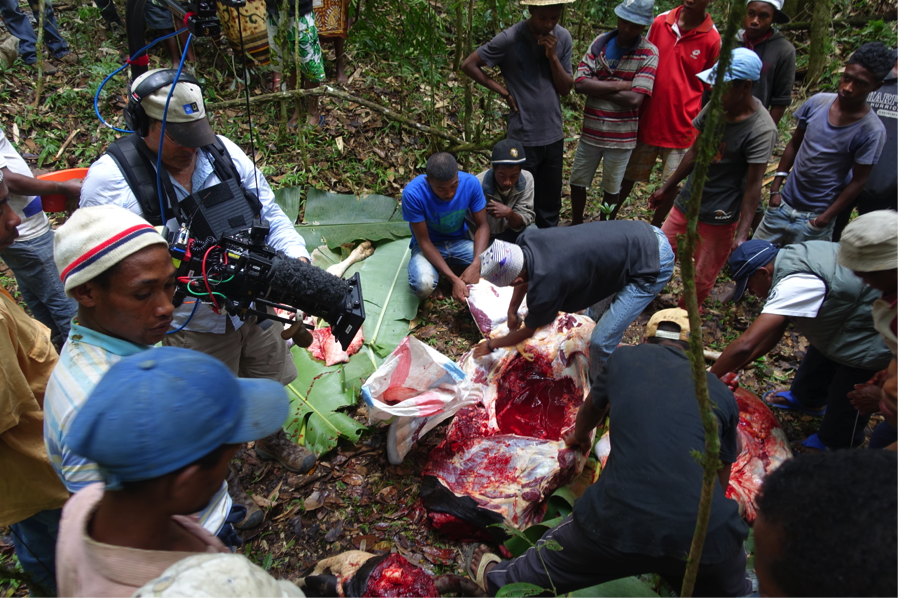 Fourth day of shooting: In Ranomafana Park, we met one of the world's foremost primatologists, Dr. Patricia Wright, and members of the local tribe, who organized a zebu to be sacrificed in honor of the creation of a new national park.[/caption]
Fourth day of shooting: In Ranomafana Park, we met one of the world's foremost primatologists, Dr. Patricia Wright, and members of the local tribe, who organized a zebu to be sacrificed in honor of the creation of a new national park.[/caption]
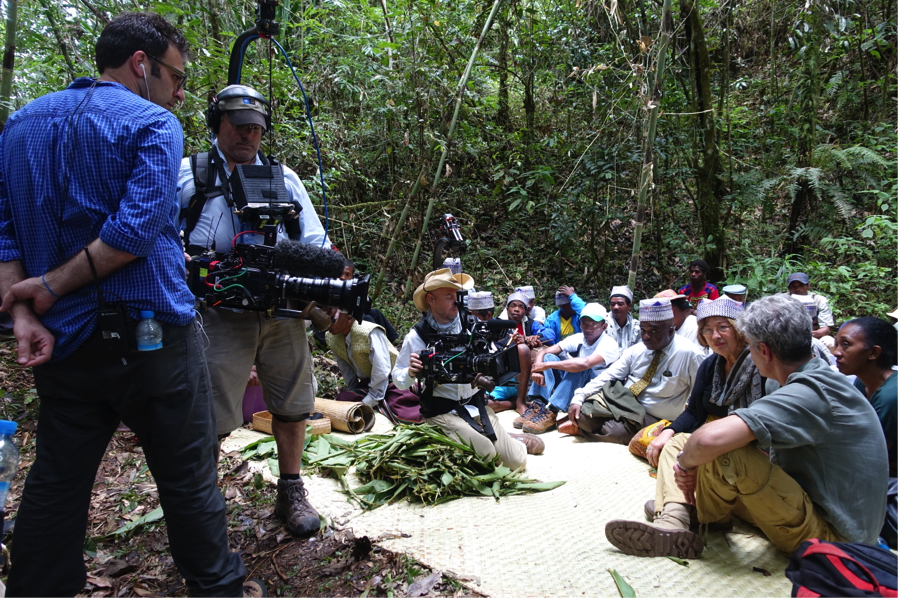 Here, Tom listens in on the conversation between Tony and Dr. Wright before they taste the very strong, very delicious local rice wine, toaka gasy, with a fresh honey chaser.[/caption]
Here, Tom listens in on the conversation between Tony and Dr. Wright before they taste the very strong, very delicious local rice wine, toaka gasy, with a fresh honey chaser.[/caption]
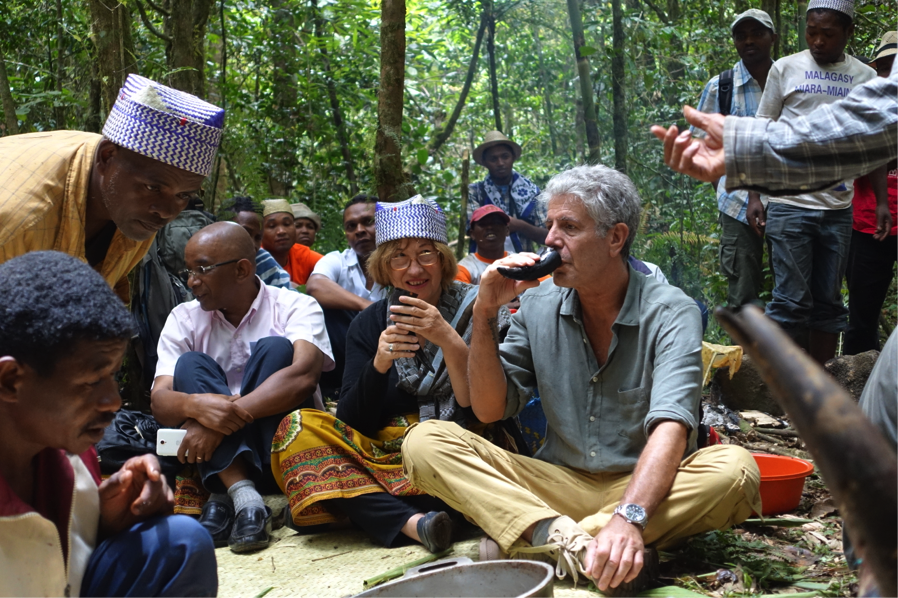
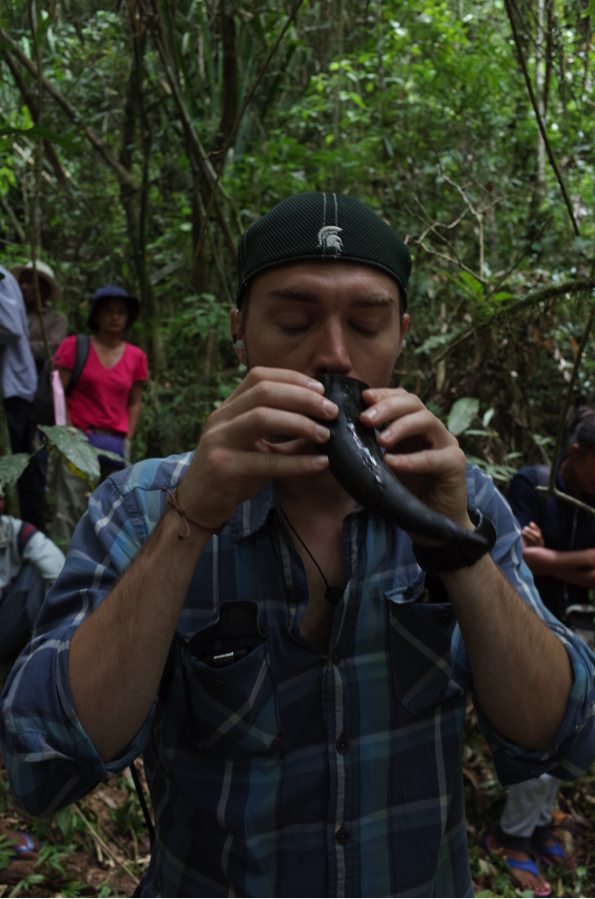 Don't mind if I do.[/caption]
Don't mind if I do.[/caption]
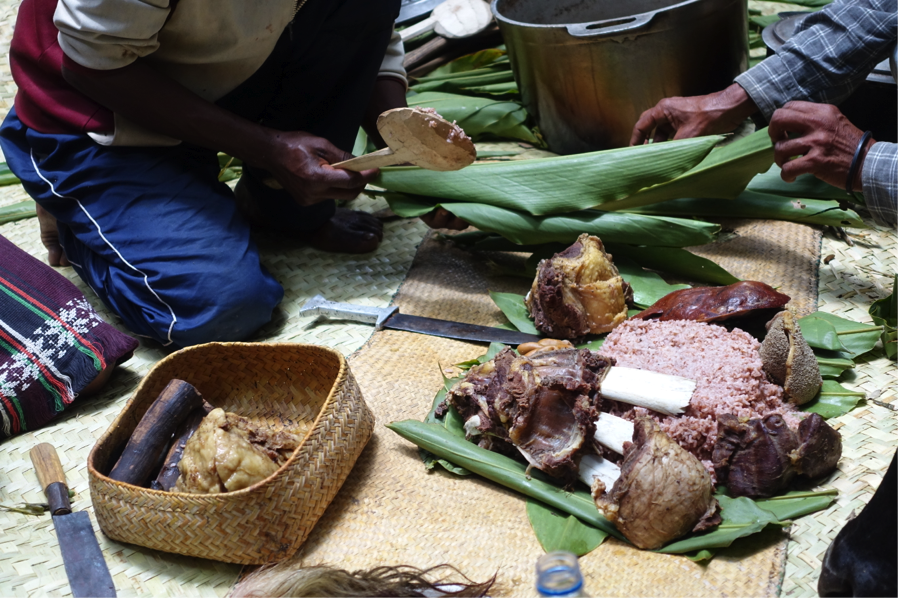 Not a single organ of the zebu will be wasted![/caption]
Not a single organ of the zebu will be wasted![/caption]
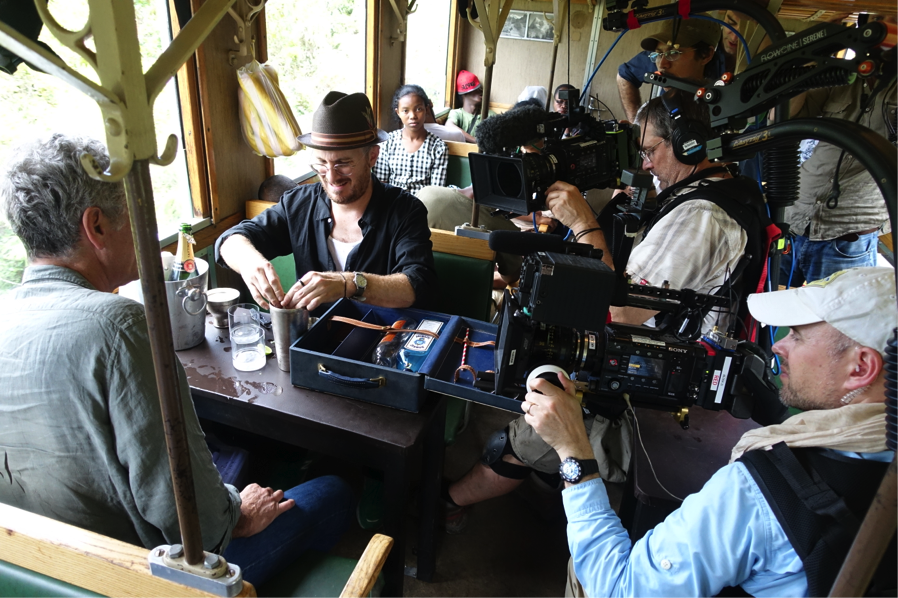 Shoot day five: Moments before departure, the train's oil pan had fallen out of the engine and needed repair. The Malagasy are extremely resourceful and had it fixed in only 45 minutes. The conductor told me that their solution otherwise would have been to run the train regardless, and just feed in oil at the top, continuously watching it hit the engine and drip out the bottom for the 22-hour trip.[/caption]
Shoot day five: Moments before departure, the train's oil pan had fallen out of the engine and needed repair. The Malagasy are extremely resourceful and had it fixed in only 45 minutes. The conductor told me that their solution otherwise would have been to run the train regardless, and just feed in oil at the top, continuously watching it hit the engine and drip out the bottom for the 22-hour trip.[/caption]
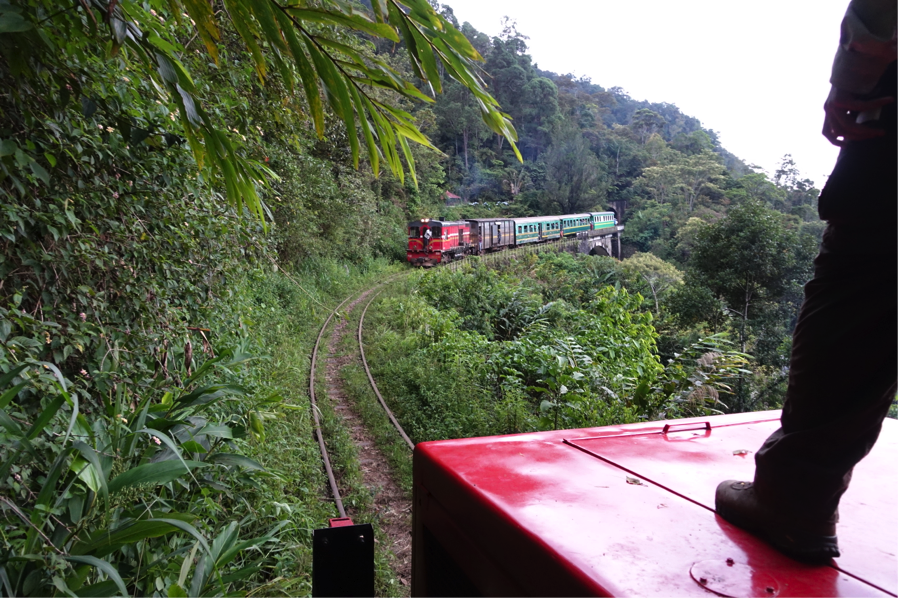 The train breaks down frequently along the route, so we arranged for the work train to accompany us in case of a breakdown and act as our getaway train. Zach, Alex and I used the opportunity to film train-to-train shots looking back at the main engine as it snaked its way through the jungle.[/caption]
The train breaks down frequently along the route, so we arranged for the work train to accompany us in case of a breakdown and act as our getaway train. Zach, Alex and I used the opportunity to film train-to-train shots looking back at the main engine as it snaked its way through the jungle.[/caption]
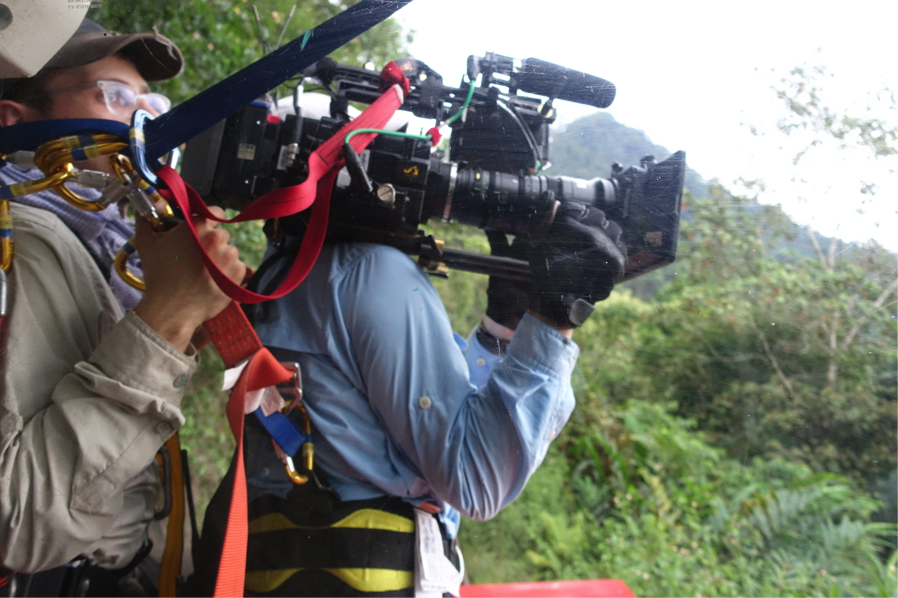
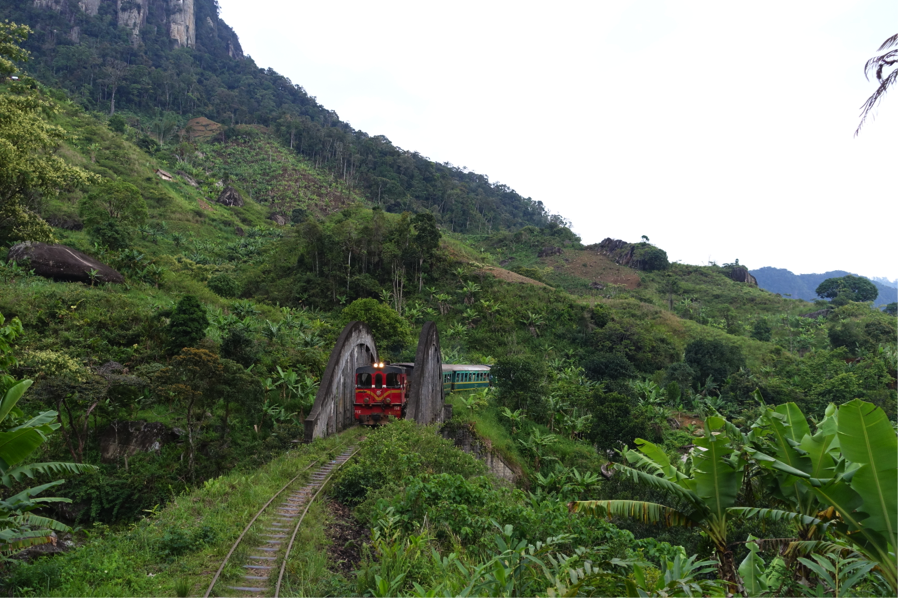 After the train crossed this bridge, the conductor turned to me and told a story about how in the 1990s, a train had crossed over that same bridge when it collapsed and went careening into the ravine below. He assured me, however, that the fixes were stronger now.[/caption]
After the train crossed this bridge, the conductor turned to me and told a story about how in the 1990s, a train had crossed over that same bridge when it collapsed and went careening into the ravine below. He assured me, however, that the fixes were stronger now.[/caption]
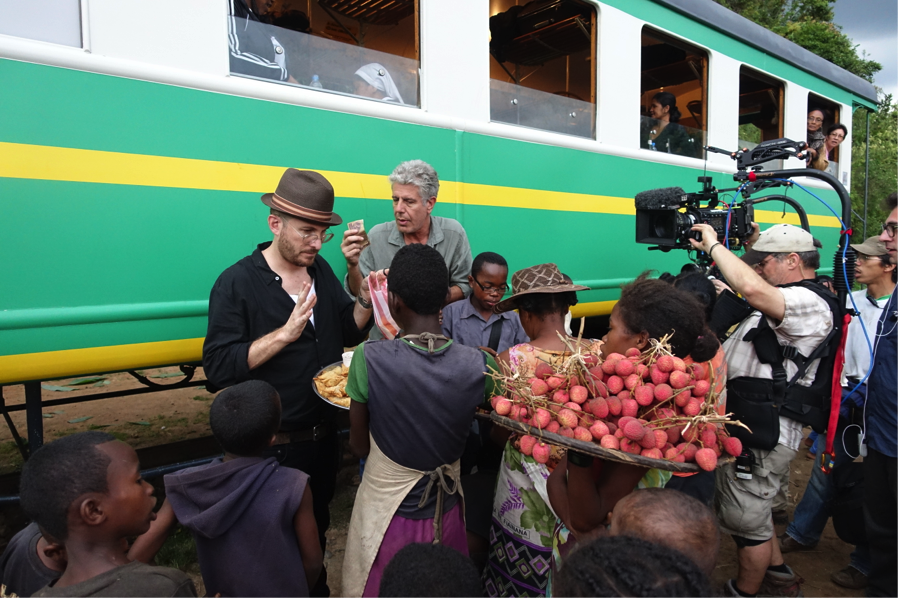 The train arrived at the one stop out of 17 along the route where they told us there would be food. Unfortunately, by the time we arrived at the station, all of the main food had been eaten, except for fruit and a handful of fried pastries.[/caption]
The train arrived at the one stop out of 17 along the route where they told us there would be food. Unfortunately, by the time we arrived at the station, all of the main food had been eaten, except for fruit and a handful of fried pastries.[/caption]
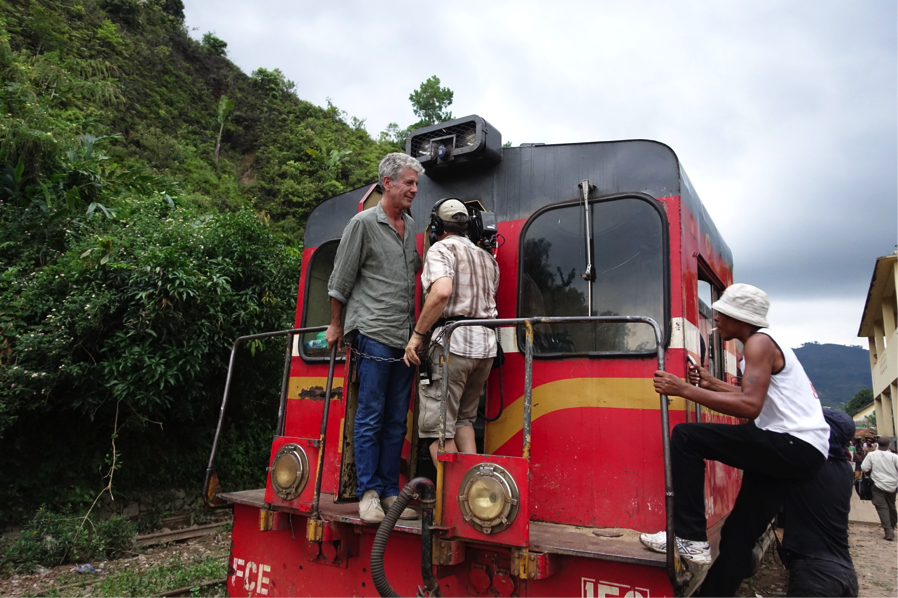 Our bellies still empty, we were cheered up by riding on the front of the train just before sunset. This was one of the true joys on this trip, passing by each little village, watching the friendly waves from the people, ducking from the incoming jungle fronds and laughing when someone did get smacked. After sunset, Tom, Darren and I rode in the darkness, the solitary light from the head of the train revealing villages just moments before the train passed by, charging onward into the night.[/caption]
Our bellies still empty, we were cheered up by riding on the front of the train just before sunset. This was one of the true joys on this trip, passing by each little village, watching the friendly waves from the people, ducking from the incoming jungle fronds and laughing when someone did get smacked. After sunset, Tom, Darren and I rode in the darkness, the solitary light from the head of the train revealing villages just moments before the train passed by, charging onward into the night.[/caption]
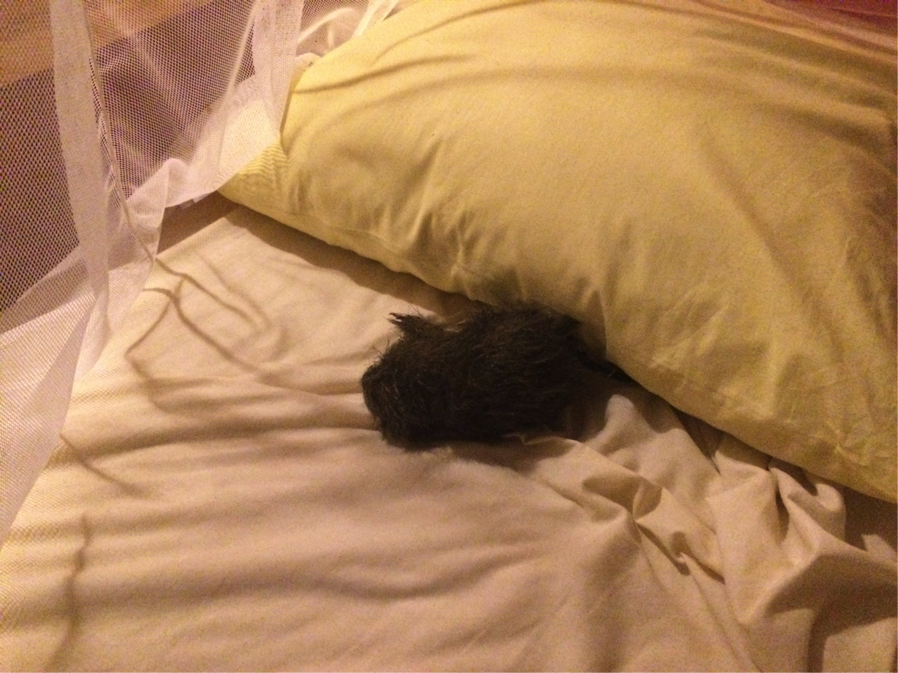 Shoot day six: After the arduous train trip, I retired to my room, ready to lie down on a soft bed and drift into my recurring Malarone-induced terror dreams, when I discovered a small, furry beast under my pillow. I started beating it violently, but when I stopped for air, I found the culprit was a small stuffed rat. Enraged, I brought it to breakfast in the morning, where I found a snickering Tony, who so can't resist pranking someone on the crew that he'd brought it all the way from NYC.[/caption]
Shoot day six: After the arduous train trip, I retired to my room, ready to lie down on a soft bed and drift into my recurring Malarone-induced terror dreams, when I discovered a small, furry beast under my pillow. I started beating it violently, but when I stopped for air, I found the culprit was a small stuffed rat. Enraged, I brought it to breakfast in the morning, where I found a snickering Tony, who so can't resist pranking someone on the crew that he'd brought it all the way from NYC.[/caption]
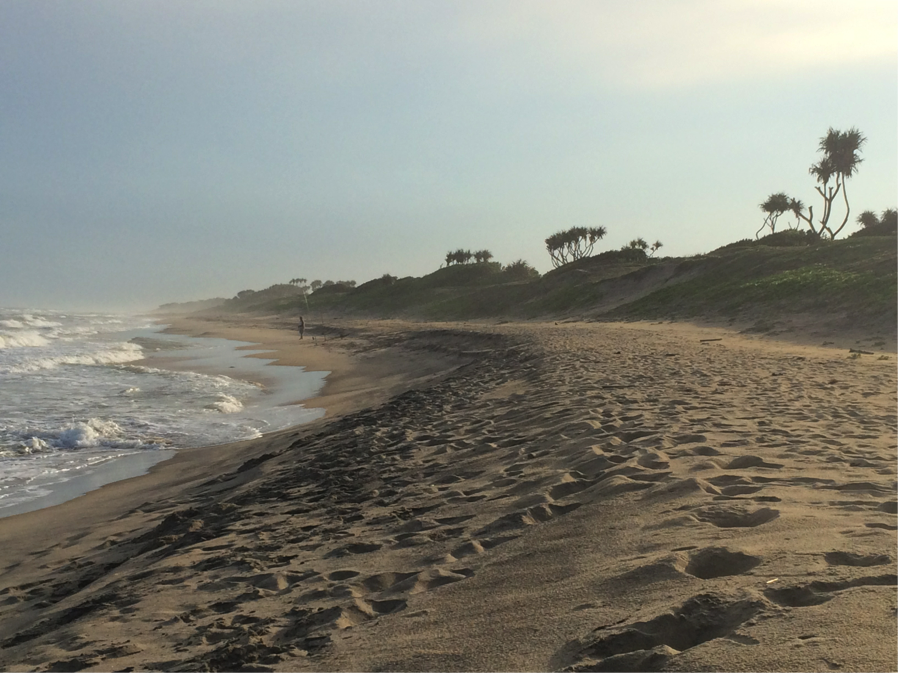 Shoot day 7: Manakara. We reached the sleepy coastal town, which truly feels like the end of the world. Stretching out from here is nothing but thousands of miles of shark-infested Indian Ocean. The local fisherman head out daily in the pirogues, roughly 50 miles out, to catch fish these days, including the giant spiny lobster cooked at the feast that evening. Stocks are low and overfishing has led to a massive decline in the fish population.[/caption]
Shoot day 7: Manakara. We reached the sleepy coastal town, which truly feels like the end of the world. Stretching out from here is nothing but thousands of miles of shark-infested Indian Ocean. The local fisherman head out daily in the pirogues, roughly 50 miles out, to catch fish these days, including the giant spiny lobster cooked at the feast that evening. Stocks are low and overfishing has led to a massive decline in the fish population.[/caption]
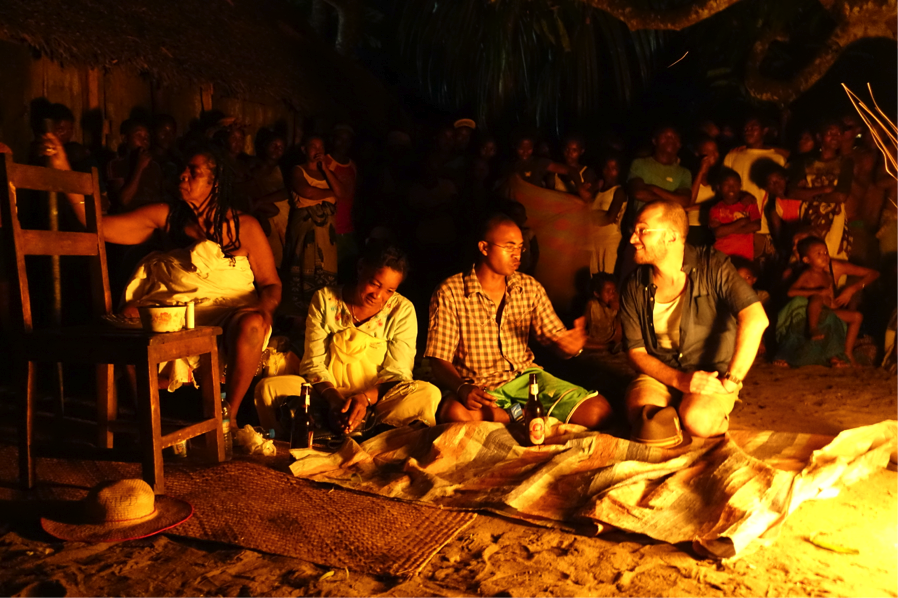 The night before our last day, the local fishing village hosted a huge party. Darren sat down with a shaman to have his fortune told.[/caption]
The night before our last day, the local fishing village hosted a huge party. Darren sat down with a shaman to have his fortune told.[/caption]
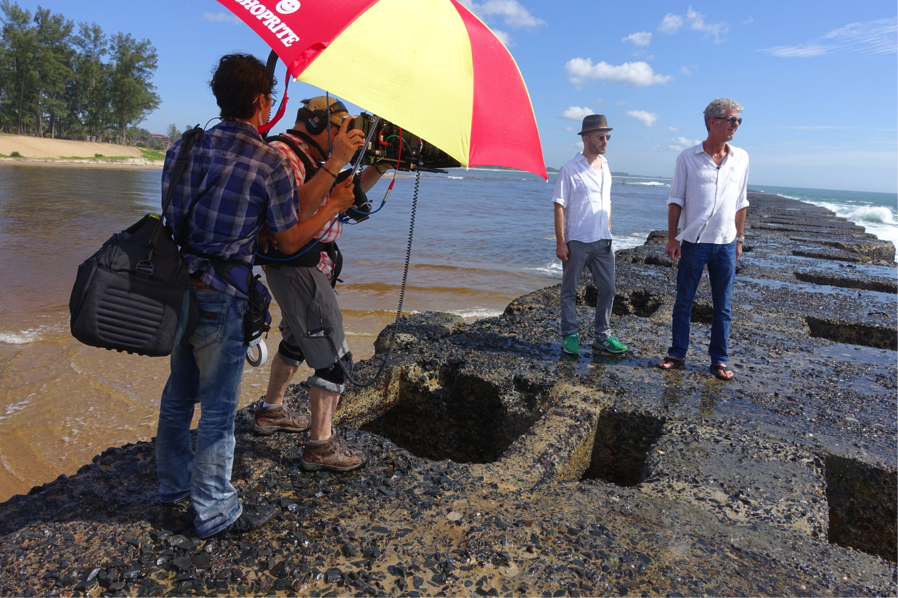 Shoot day eight: The last scene with Tony and Darren on the seawall nearly ruined Todd's camera when a massive wave smashed into the side and drenched all of us. We lost a microphone but escaped with the camera and the footage.[/caption]
Shoot day eight: The last scene with Tony and Darren on the seawall nearly ruined Todd's camera when a massive wave smashed into the side and drenched all of us. We lost a microphone but escaped with the camera and the footage.[/caption]
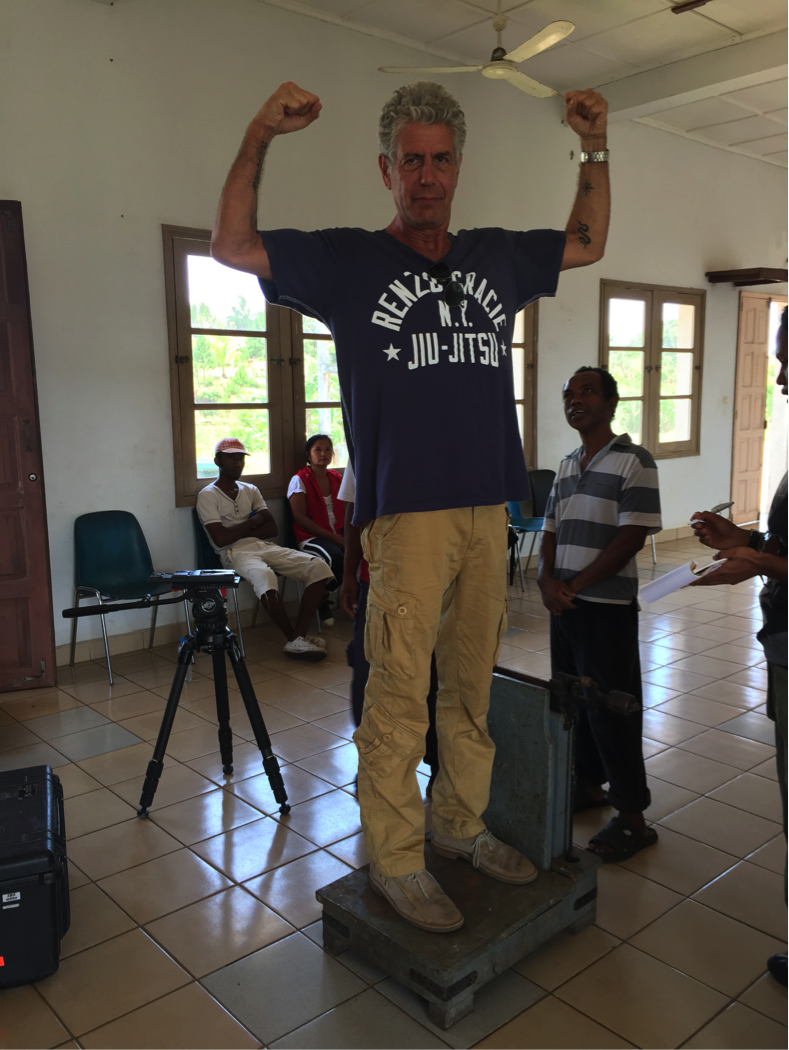 Rushing to catch our flight back to Tana, we needed to weigh every piece of gear and each passenger to make sure that the cargo load wasn't maxed out. The expression on the face of the gentleman behind Tony says it all.[/caption]
Rushing to catch our flight back to Tana, we needed to weigh every piece of gear and each passenger to make sure that the cargo load wasn't maxed out. The expression on the face of the gentleman behind Tony says it all.[/caption]
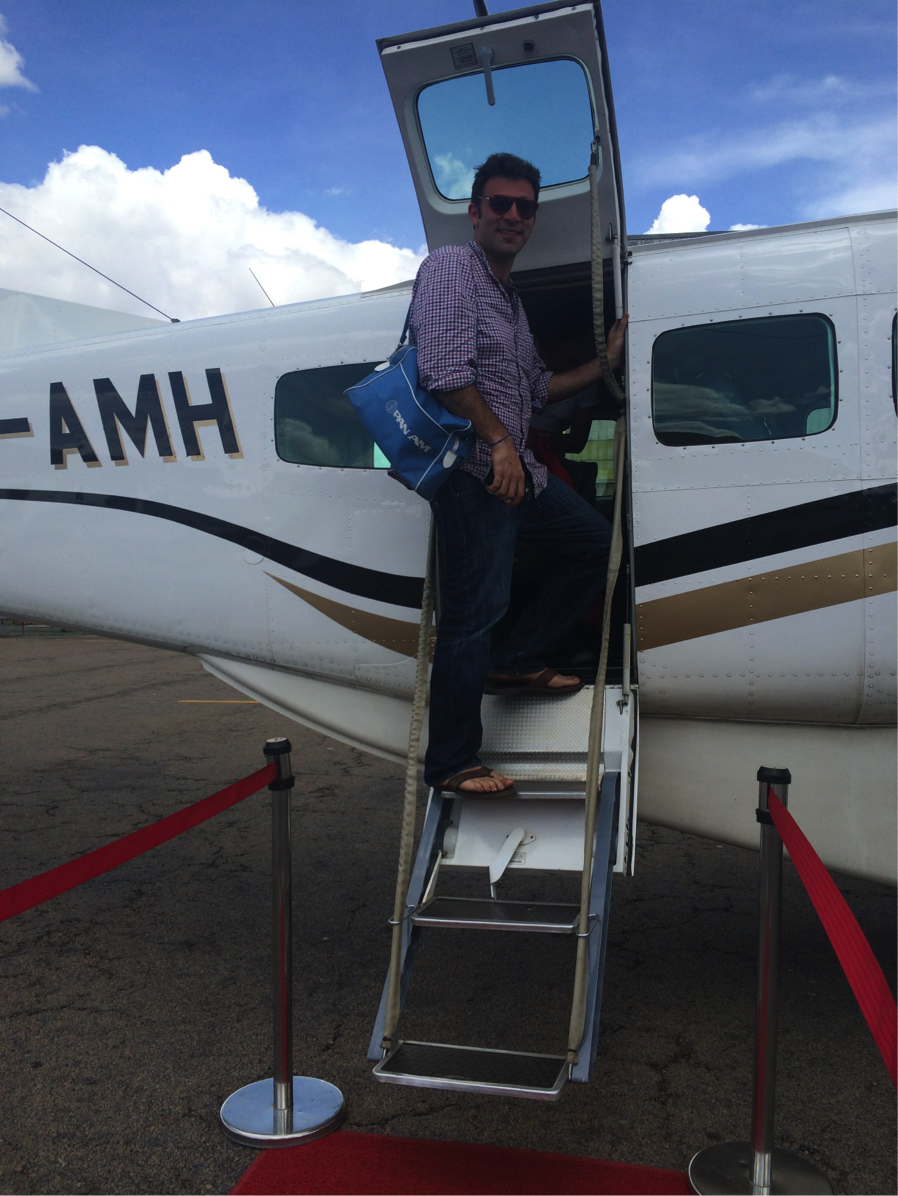 The trip that took us 12 hours by car and 22 hours by train was only 45 minutes by plane returning to Tana. A very happy Tom is disembarking here safe and sound.[/caption]
The trip that took us 12 hours by car and 22 hours by train was only 45 minutes by plane returning to Tana. A very happy Tom is disembarking here safe and sound.[/caption]
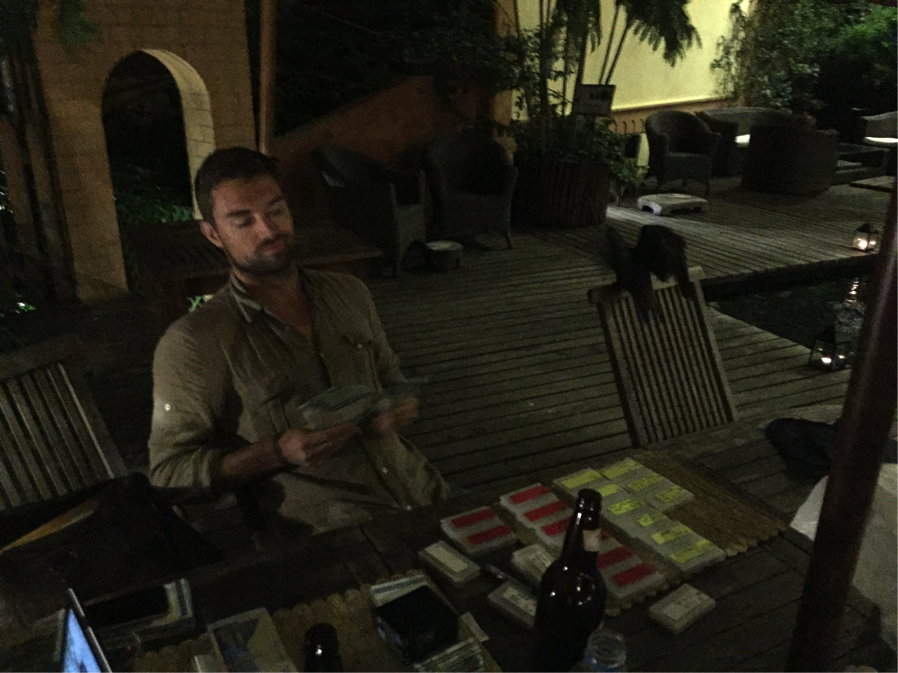 On our last night in the country, we wrapped at the hotel, sharing drinks with our local crew, saying our goodbyes. I double-checked the tapes and finalized the budget. All in all, we filmed over 100 hours of footage that will get cut down to 44 minutes of television.[/caption]
On our last night in the country, we wrapped at the hotel, sharing drinks with our local crew, saying our goodbyes. I double-checked the tapes and finalized the budget. All in all, we filmed over 100 hours of footage that will get cut down to 44 minutes of television.[/caption]


